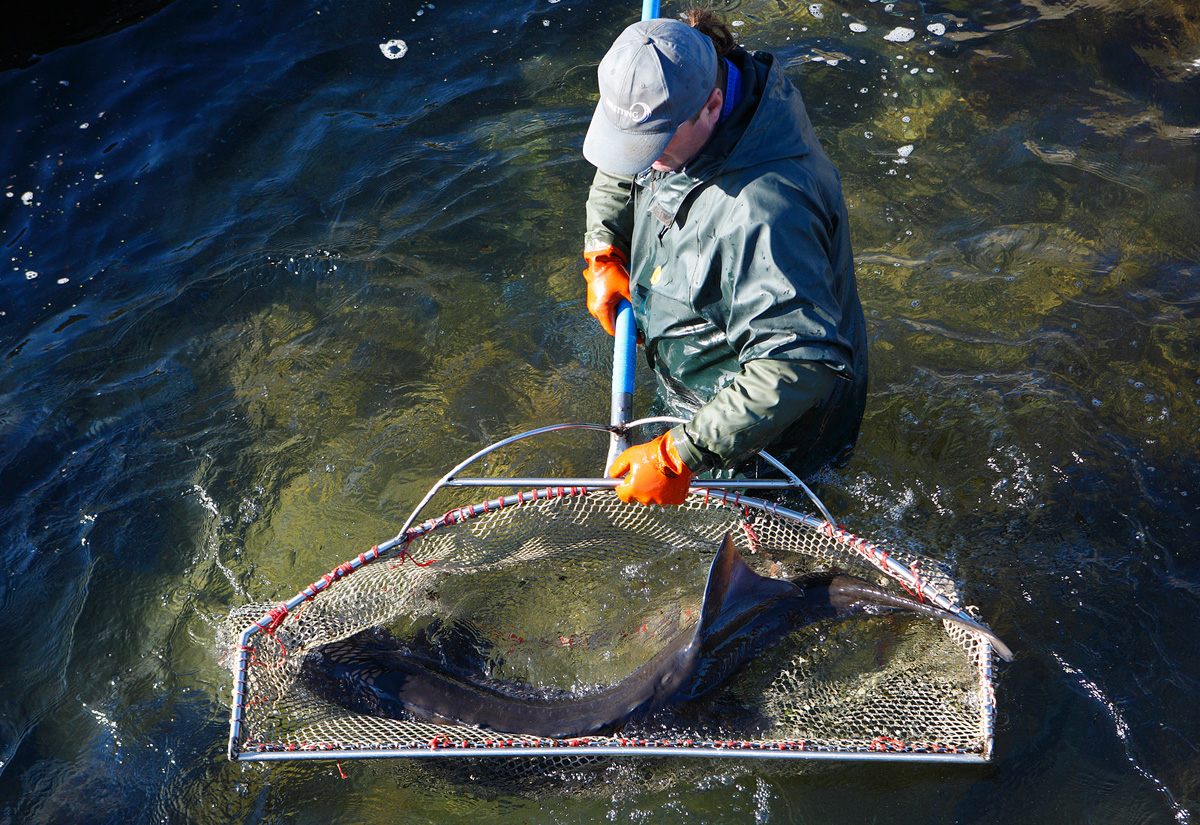No products
- Caviar Guide
- Caviar basics
- What is caviar?
- What is a good caviar?
- How to enjoy caviar?
- How to serve and pair caviar
- What are the types' differences?
- Caviar nutritional values
- Recipes with caviar
- Caviar production
- Caviar producers
- Challenges of sturgeon farming
- Caviar processing steps
- Kaviari expertise - Caviar selection
- Kaviari expertise - Caviar ageing / maturation
- Kaviari expertise - Caviar traceability
- All about sturgeons
- Sturgeons' main types
- Why is sturgeon endangered?
- A protected specie
Challenges of sturgeon farming

Sturgeon farming requires investment, technical skills and patience! Indeed, it takes 7 to 14 years for a female to reach sexual maturity and carry eggs. The extraction of the precious egg pocket (the roe) costs them the life.
What are the main challenges for sturgeon farmers?
Water
Water is the most important factor in sturgeon farming. Whether the farm is in a tank or a lake, the water usually comes from nearby mountains to recreate a natural ecosystem for fishes. It is a spring water, free of pesticides, constantly recycled, with a temperature of 15-18 degrees (ideally 19 degrees). Some breeders prefer indoor tanks protected from the sun, others use outdoors ponds. We do not yet have any hindsight on the sun effects on the sturgeons growth but it appears that they grow faster in the shade.
In most cases, farmers install a geothermal drilling system, which keeps fish at a constant temperature in both summer and winter time. In addition, they implement an environmentally friendly water treatment system by filtration, that enables the water to have the same quality in and out the installations. Some farmers even recycle the water (fully or partially).
This treatment guarantees pure and oxygenated water for the sturgeon well-being .
Fish must also have sufficient room to swim freely. The breeders with whom we work raise the sturgeons in large spaces (lake, ponds or tanks) so that they develop in the best conditions.
Food
Food also plays a central role. It has to be specifically adapted for the sturgeon and constantly monitored.
Farmers mainly use fish meat certified without GMOs. Some complement this diet with small fishes (sardines, shrimp,...).
Time
The first sturgeon farmers have often underestimated the time needed to develop their business. Indeed, it takes about ten years on average to obtain a stable production of caviar, with a good amount of sturgeon spawns able to ensure the survival of generations!
In an aquaculture environment, sturgeons live their first years in areas of fresh water, large lakes or ponds where they grow in the best conditions. After 3/4 years, the sex of the sturgeon is identified by ultrasound. The males and females are then separated. The males are sold for their flesh. The females keep growing in ponds.
The maturity cycle of the sturgeon is respected like in a wild environment. Mature sturgeon females are pampered. They must not be upset and farmers want to avoid any irritation or they will have to wait for the next breeding cycle, ie more than 2 years!
It takes at least 7 years depending on the species for the sturgeon females to carry their first eggs. The females with the best quality eggs (the development of which is monitored by biopsy) are then selected for caviar production in ultramodern laboratories complying with European sanitary standards.